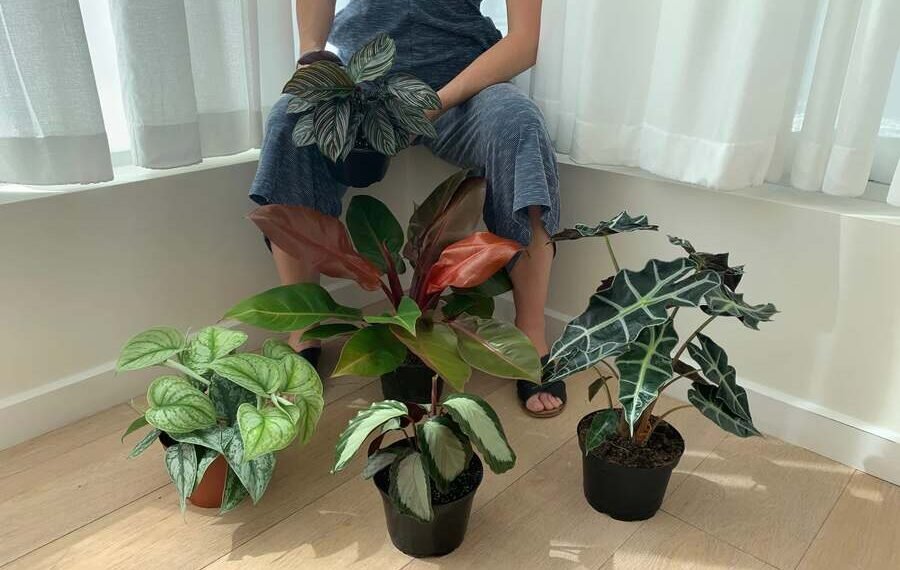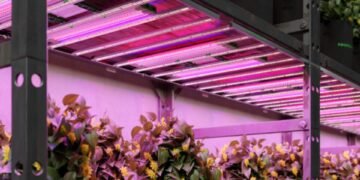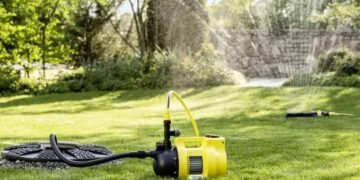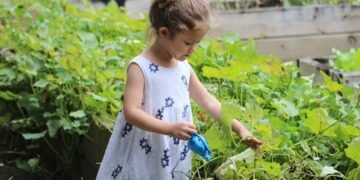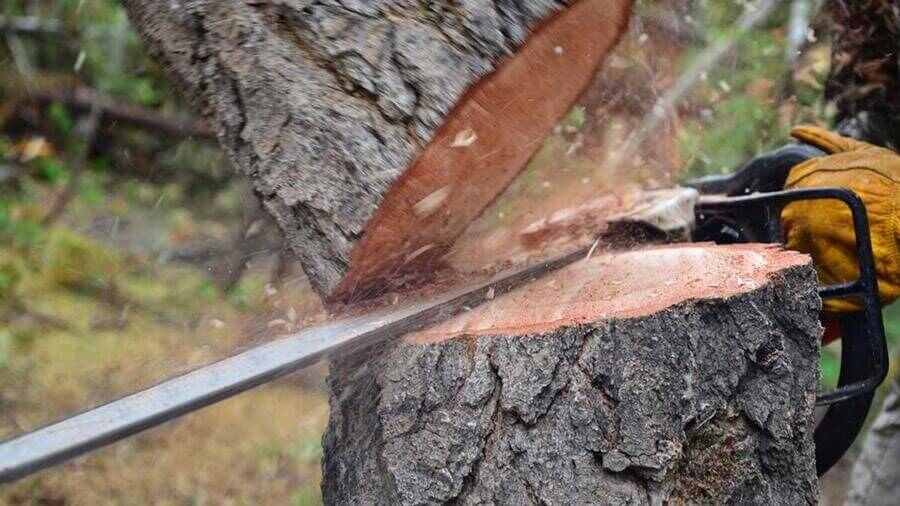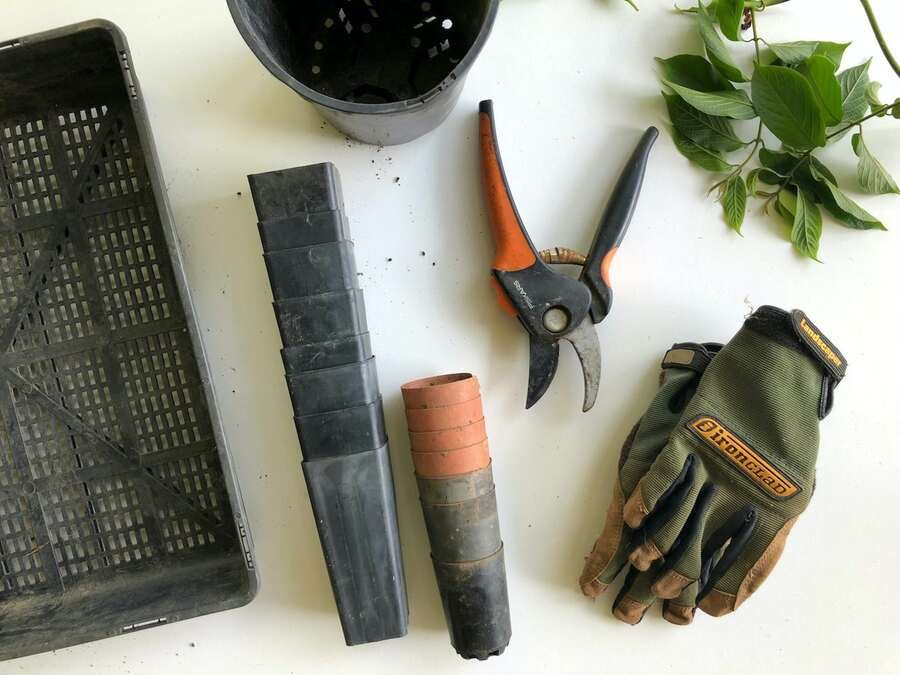Warm weather means it’s time to get outside, lounge on the deck, or hang out on the porch or balcony. Plants are a great way to make an outdoor spot feel cozy and inviting. Add greenery to your outdoor entertaining area without breaking the budget by using plants you already own.
Many houseplants can comfortably live in an outdoor area for the summer, depending on the space and the plants. Here’s what you need to know before relocating your houseplants to an outdoor space.
Evaluate Your Space
Most houseplants are tropical in origin, and they can handle bright, indirect sunlight in nature. A lot of houseplants are understory plants, which means they grow under the tree canopy and receive dappled sunlight as it reaches through the treetops. Houseplants are not used to direct sunlight, so they need protection from the sun’s rays.
The ideal outdoor location for relocated houseplants will be covered. A screen porch or a gazebo with a roof are the best options. Even a sailcloth or a pergola can offer protection from direct sunlight. You can slowly acclimate houseplants to direct sunlight, but it takes time.
Consider the orientation of your space when selecting where to place plants. An area with clear southern exposure or no overhead cover will receive intense sunlight, while a balcony on the north side of a building will have much less sunlight. Afternoon sunlight is the brightest and most harsh. When possible, select a spot that receives morning sunlight and afternoon shade.
Sun Damage
Plants not acclimated to direct sunlight will burn if they receive direct light. Sunburn appears as dark black or brown spots on leaves. Trim damaged leaves as you notice them and relocate the plant to a place with less direct sunlight.
Pesky Bugs
A perk of displaying plants on a screen porch is that you have greater control over the environment, which reduces the risk of infestation. Bugs happen, but taking steps to minimize the risk increases the odds of the plants thriving. Treat infested plants with horticultural oil or preemptively spray the plants with horticultural oil to ward off pesky bugs.
Climate Concerns
Relocating houseplants more likely to thrive in your climate will set your plants up for success and good health. Sansevieria or snake plants prefer arid conditions, while tropical plants, like calathea and philodendron, thrive in humidity. The transition to the outdoors is easier when the plant is going into a climate that somewhat mimics what it experiences in its native habitat.
Provide an Assist
Succulent plants that prefer dry conditions can still live outdoors in a humid environment, but they should be placed in a covered area so they are not drenched every time it rains. Humidity-craving plants can live in dry climates, but you may need to mist the plants with water routinely to give them that extra moisture they need.
You can just about always help your houseplants live in challenging outdoor climates. Consider the amount of work and commitment necessary to make it happen before moving the plants. The consistent conditions inside often allow many houseplants to thrive without much hands-on care, but the environment outside may require more effort.
Timing
Moving your houseplants to your balcony on the first warm day is tempting, but not so fast. Your plants are acclimated to living indoors, where the conditions are constant. Outside, there are much more drastic fluctuations, and you must slowly introduce your plants to this environment. Start by moving your plants outside for an hour or two when it’s warm. Bring the plants back in overnight and move them outdoors again the next day for a few hours. Make sure the plants are not in direct sunlight during this acclimation period.
Make your move when the temperature is consistently above 50 degrees Fahrenheit. Most houseplants cannot spend the night outside if the air temperature dips below 50 degrees. The cutoff for some plants, the ZZ Plants, is 60 degrees. Research your specific plant to learn what it needs to thrive and live its best life.
Decorate Your Space
Select a decorative pot that matches the look of your space, but choose a container with drainage. Drainage is vital for potted plants, but it’s all the more important when grown outdoors. Houseplants moved to an outdoor space need to be in a container with a drainage hole, and standing water must routinely be removed from the saucer or cachepot.
Style the space so the plants do what they do best. Vining pothos, philodendrons, or tradescantia look stunning in a hanging basket. A Norfolk Island pine will appreciate increased humidity and look stately as a floor plant. A large monstera creates a tropical vibe and elevates the aesthetic.
Keep an Eye on Things
Monitor your plants for signs of sun damage, water stress, or pests. It’s often easier to address a minor issue than a big one, so early detection is crucial. There is always a risk when you move plants outside, so decide whether you want to take the chance before moving a specific plant. If you have rare plants like a Monstera Thai Constellation or Philodendron Pink Princess, it may be worth keeping them exclusively indoors.
Track the weather and move plants inside if a severe storm is forecast. High winds can rip foliage, and hail can cause significant damage. Sometimes, setting hanging baskets on the ground is enough to prevent damage or temporarily move the plants inside until the storm passes.
Seasonal Migration
Bring your plants back inside in the fall before the temperature turns chilly. Houseplants moving back inside do not need to go through an acclimation process. Clean up and prune the plants to remove any damaged branches or stems. Inspect the plant, specifically looking for signs of pests. Time your inspection for a week or two before you bring the plants inside so you have time to treat an infestation if necessary. Quarantine the plants when you bring them inside, so any houseplants that exclusively live indoors are not exposed to pests.
Also Read: 12 Smallest Bonsai Trees Collection for Indoor and Outdoors

